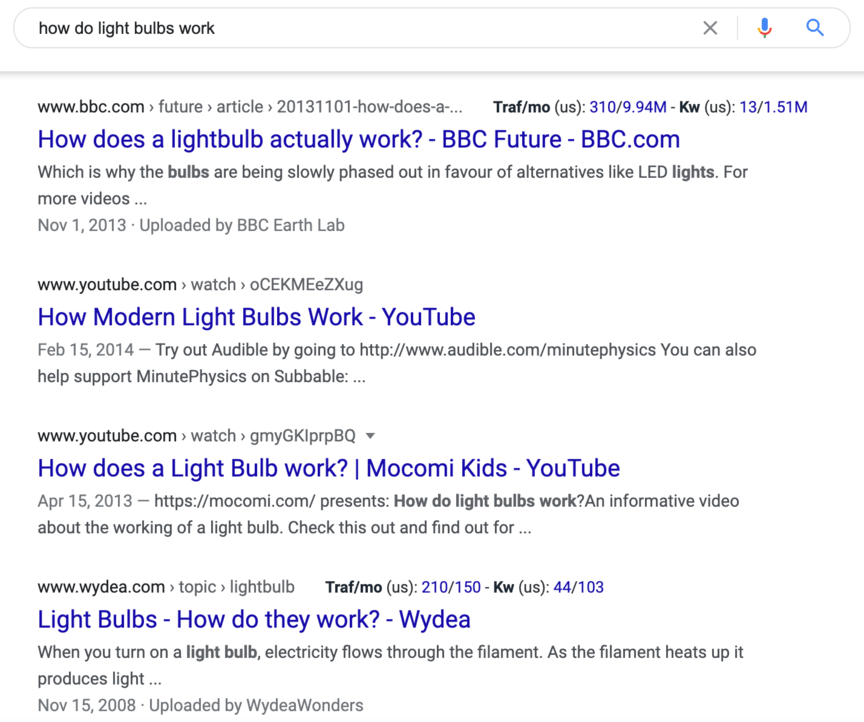Want Someone to Explain SEO? Start Here
If you own or manage a small- to mid-sized business, marketing should be one of your top priorities. The only reliable way to grow your audience and boost sales is to market to potential customers.
And one of the best marketing strategies to pursue is search engine optimization (SEO).
If you’ve started looking into digital marketing for your business, you’ve probably heard the term “SEO” thrown around quite a bit. But in all that time, you may have failed to get a good idea of exactly what it means.
So, just what is SEO? We’ll explain SEO for you in simple terms below, regarding both what it is and how it works. Read on for a complete overview of SEO, and then subscribe to Revenue Weekly for more digital marketing tips!
Sign up today!

For even more digital marketing advice, sign up for the email that more than 150,000 other marketers trust: Revenue Weekly.
Explain SEO: What is SEO?
The best way to start our SEO explanation is by talking about what SEO is.
You can watch this video to get a simple introduction to SEO:
SEO is a digital marketing strategy that centers around helping your web content appear in Google search results. Over a billion people use Google every month, providing a vast expanse of potential customers to draw from. The idea of SEO is to put your marketing in front of them.
Google’s algorithms don’t simply list results, though. They rank them. Whenever someone searches for something, Google judges which results are the most relevant and ranks them on page one. The higher a page appears in the results, the more relevant it probably is.

As you likely know from experience, though, few people bother to look at any of the results past the first page — 95% of people stay exclusively on page one. That means you have to rank in the top few results for a given search to get found on Google.
The goal of SEO, then, is to rank your web content high in relevant Google search results so that users will find it and be drawn to your website. Once on your site, they can become leads or convert.
How does SEO work?
To continue our SEO explanation, we’ll want to look at how SEO works. That is to say, what exactly happens when you implement an SEO campaign?
The short answer is that SEO works by optimizing your web content to satisfy Google’s ranking algorithms.
I said earlier that Google ranks search results by relevance, but it’s actually more complicated than that. Google takes a variety of factors into account when ranking content, factors its algorithms are designed to look for and assess.
Some factors are about content, while others are technical.
Your job is to optimize your web content for as many of those ranking factors as possible. For example, one of Google’s ranking factors is HTTPS. Sites that use HTTPS are more secure for users, so Google ranks them higher. To rank higher, then, you would add HTTPS to your site.
For each ranking factor that you optimize, your rankings will go up. If one of your pages satisfies Google’s algorithms better than any other page for a given search, it will take the top spot, and most likely drive the most traffic.
How can you get the most from your SEO?
We’ve finished our basic overview of SEO, but we can still do more to explain SEO. You likely still have plenty of questions — particularly about how you can make SEO work for your business. Just because you know how SEO works doesn’t mean you know how to use it.
As mentioned above, the main thing is to satisfy as many of Google’s ranking factors as you can on your web pages. But what are those factors? What should you focus on optimizing on your pages?
Here are four ways to optimize any page on your site to rank in search results.
1. Satisfy user search intent
Since one of Google’s top ranking priorities is search relevance, arguably the best ranking factor you can optimize for is user search intent — that is, the reason users search for a given term.
Let’s say you try to get a blog post ranking for the search term “how to repair a grill.” If your blog post is nothing but 1200 words of ad copy for your new grills, it probably won’t match search intent. Any users that find it will immediately click away, since it’s not useful to them.
To find the user search intent for a given search, look at what’s currently ranking, and figure out what search intent it’s targeting. Then craft content that matches that intent.
2. Integrate keywords
Another way you can signal to Google that your content is relevant to a particular search is by targeting keywords. Keywords are the terms people enter into the Google search bar. By incorporating a particular keyword into your content, you can help it rank for that search.
When you do this, be careful not to over-optimize.
Stuffing a keyword into every other sentence will not only fail to help you, but will actively hurt you in rankings. Instead, include keywords only a few times — in the title, in your headings, and occasionally in the body text.
You can use tools like KeywordsFX to help you find related keywords to use in your SEO!

Need help with your SEO, marketing manager? Check out our SEO Guide for Marketing Managers to start driving more site traffic, leads, and revenue!

3. Practice responsive design
Did you know that more than 50% of all Internet traffic comes from mobile devices? That means if your website isn’t mobile-friendly, you’ll miss out on more than half your traffic. No one on mobile will stick around for a badly-formatted site.
That’s why it’s so critical to implement responsive design — that is, to optimize your site for mobile and desktop devices alike. On top of everything else, Google ranks pages based on their mobile versions, so a non-mobile-friendly page won’t rank at all!


4. Optimize page load speed
When users visit your website, they expect pages to load fast. More specifically, 83% of users expect pages to load in three seconds or less. If a page loads too slowly, most users will hit the “back” button, driving up your bounce rate.
If Google detects a high number of users bouncing from a page on your site, it will assume that the page is unhelpful to users and will rank you lower. To stay on top of rankings, you must ensure that your page load speeds stay fast.
Here are some ways to do that:
- Cache web pages
- Limit redirects
- Minify code
- Compress images
If you do each of these things, your pages will load faster and your rankings will go up!
All Pro Trailer SuperstoreA Partner Businesses Trust
Get help optimizing your SEO with WebFX
The above information serves to explain SEO in a basic light, but a 1200-word SEO explanation can’t cover all the nuances that go into launching your first campaign. If you need a hand getting your SEO off the ground, though, don’t worry — WebFX is here to help.
With over 20 years of experience with SEO, we know everything about how SEO works, and we know how to drive results for our clients. With our SEO services, you’ll get help implementing each of the tips listed above and more.
To get started with us, just give us a call at 888-601-5359 or contact us online today!